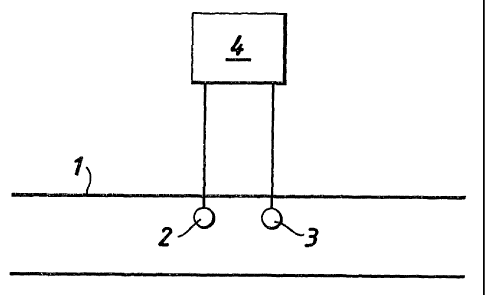Some of the information on this Web page has been provided by external sources. The Government of Canada is not responsible for the accuracy, reliability or currency of the information supplied by external sources. Users wishing to rely upon this information should consult directly with the source of the information. Content provided by external sources is not subject to official languages, privacy and accessibility requirements.
Any discrepancies in the text and image of the Claims and Abstract are due to differing posting times. Text of the Claims and Abstract are posted:
| (12) Patent: | (11) CA 2428620 |
|---|---|
| (54) English Title: | DETERMINATION OF EFFECTIVE COMPOSITION OF A MIXTURE OF HYDROCARBON GASES |
| (54) French Title: | DETERMINATION DE LA COMPOSITION EFFICACE D'UN MELANGE DE GAZ D'HYDROCARBURES |
| Status: | Expired |
| (51) International Patent Classification (IPC): |
|
|---|---|
| (72) Inventors : |
|
| (73) Owners : |
|
| (71) Applicants : |
|
| (74) Agent: | GOWLING WLG (CANADA) LLP |
| (74) Associate agent: | |
| (45) Issued: | 2009-02-10 |
| (86) PCT Filing Date: | 2001-11-12 |
| (87) Open to Public Inspection: | 2002-05-23 |
| Examination requested: | 2003-06-13 |
| Availability of licence: | N/A |
| (25) Language of filing: | English |
| Patent Cooperation Treaty (PCT): | Yes |
|---|---|
| (86) PCT Filing Number: | PCT/GB2001/004992 |
| (87) International Publication Number: | WO2002/040992 |
| (85) National Entry: | 2003-05-05 |
| (30) Application Priority Data: | |||||||||
|---|---|---|---|---|---|---|---|---|---|
|
A method and apparatus for determining the effective composition of a mixture
of gases including a plurality of hydrocarbon gases, the method comprising
selecting one or more effective hydrocarbons to represent the plurality of
hydrocarbon gases in the gas mixture, the number of effective hydrocarbons
being less than the number of hydrocarbon gases in the gas mixture whose
composition is to be determined; measuring a number of characteristics of the
gas mixture whose effective composition is to be determined, the number of
characteristics to be measured being one less than the total number of
components to be determined and determining the effective composition of the
mixture of gases from the measurements of the characteristics of the gas
mixture, a predetermined parameter dependent upon the characteristic measured
and knowing that the sum of the components of the gas mixture equals 100 %.
La présente invention concerne un procédé et un appareil qui permettent de déterminer la composition efficace d'un mélange de gaz comprenant une pluralité de gaz d'hydrocarbures, le procédé consistant à sélectionner un ou plusieurs hydrocarbures efficaces pour représenter une pluralité de gaz d'hydrocarbures dans le mélange de gaz, le nombre d'hydrocarbures efficaces étant inférieur au nombre de gaz d'hydrocarbures présents dans le mélange de gaz dont la composition doit être déterminée; à mesurer un nombre de caractéristiques du mélange de gaz dont la composition efficace doit être déterminée, le nombre de caractéristiques devant être mesurées étant inférieur au nombre total des constituants à déterminer; puis à déterminer la composition efficace du mélange des gaz à partir des mesures des caractéristiques du mélange de gaz, un paramètre prédéterminé dépendant de la caractéristique mesurée, sachant que la somme des constituants du mélange de gaz est égale à 100 %.
Note: Claims are shown in the official language in which they were submitted.
Note: Descriptions are shown in the official language in which they were submitted.

For a clearer understanding of the status of the application/patent presented on this page, the site Disclaimer , as well as the definitions for Patent , Administrative Status , Maintenance Fee and Payment History should be consulted.
| Title | Date |
|---|---|
| Forecasted Issue Date | 2009-02-10 |
| (86) PCT Filing Date | 2001-11-12 |
| (87) PCT Publication Date | 2002-05-23 |
| (85) National Entry | 2003-05-05 |
| Examination Requested | 2003-06-13 |
| (45) Issued | 2009-02-10 |
| Expired | 2021-11-12 |
There is no abandonment history.
Note: Records showing the ownership history in alphabetical order.
| Current Owners on Record |
|---|
| ADVANTICA INTELLECTUAL PROPERTY LIMITED |
| Past Owners on Record |
|---|
| LATTICE INTELLECTUAL PROPERTY LTD. |
| THURSTON, ROBERT RICHARD |